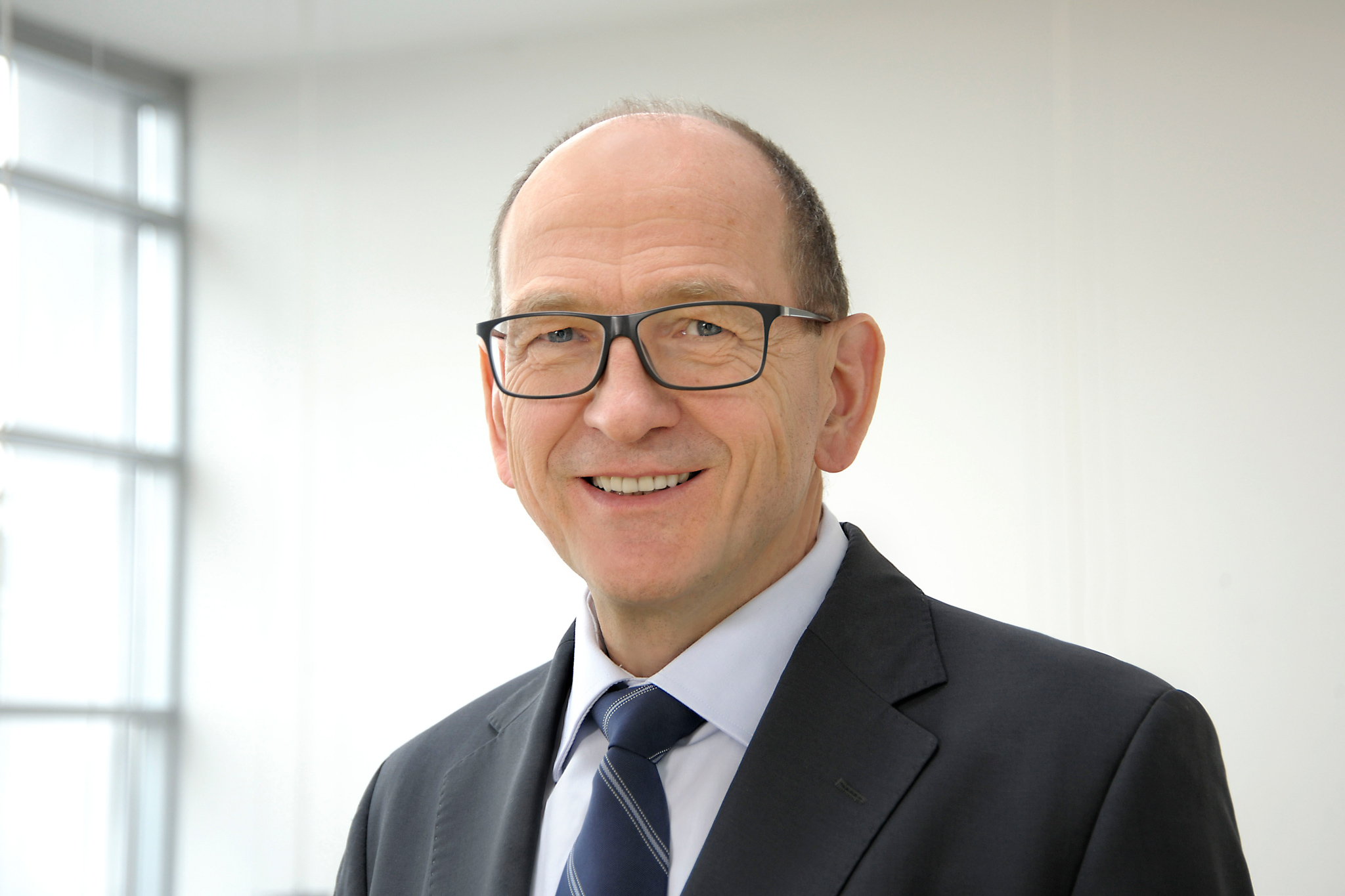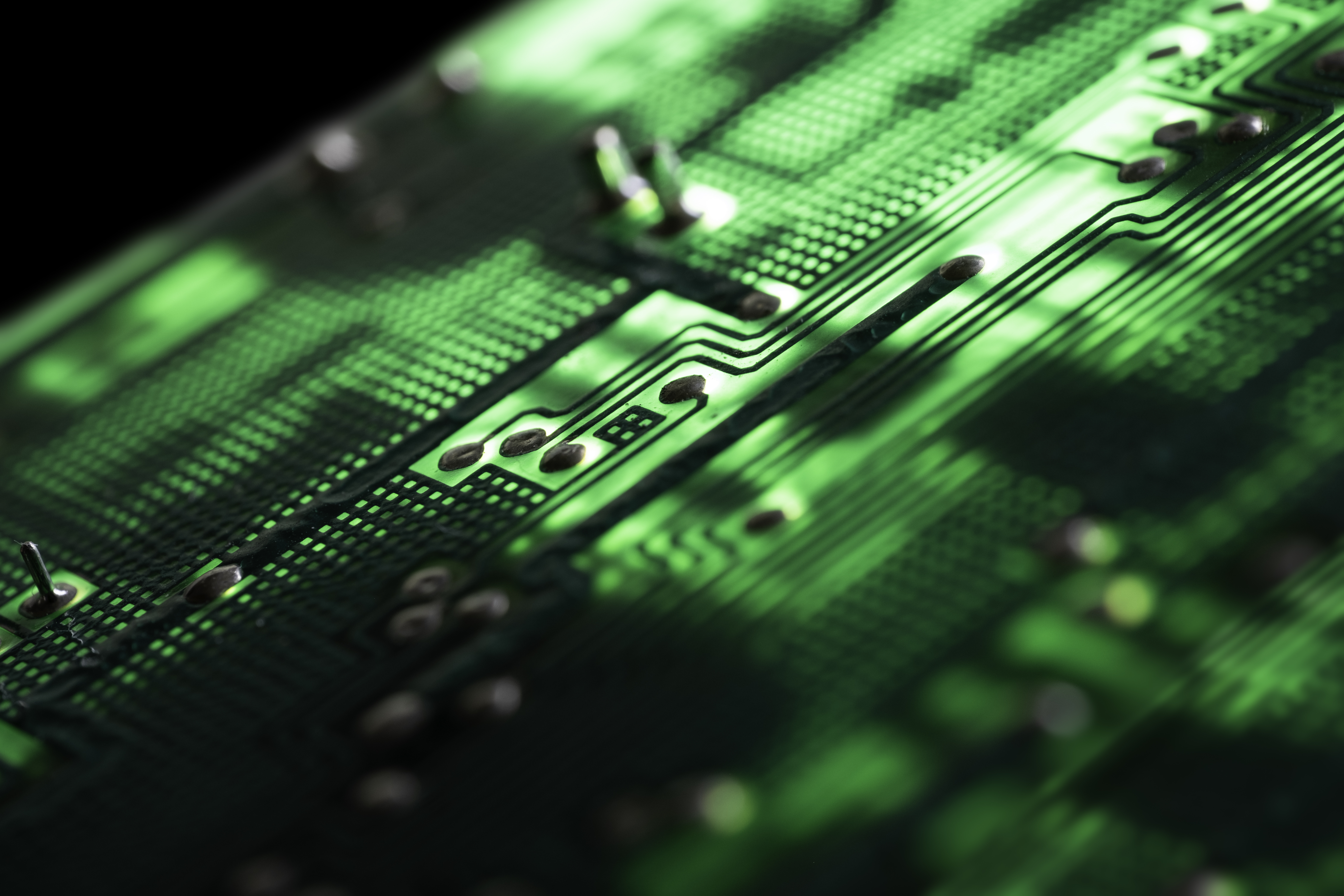In this interview, Albert Heuberger talks about the challenges facing the field of Green ICT, and how applied research can help. As chairman of the steering committee of the Research Fab Microelectronics Germany (FMD), he also discusses the topics the FMD is working on, as well as outlining the developments currently being pursued at Fraunhofer IIS.
Green ICT – toward sustainable information and communication technology
June 1, 2021 | An interview with Professor Albert Heuberger, executive director of Fraunhofer IIS.

Mr. Heuberger, the motto of the digital summit held by the Federal Ministry for Economic Affairs and Energy on December 1, 2020, was “Living more sustainably digitally”. In your keynote speech on Green ICT, you offered some insights into how electronics can help to save energy in information and communication technology. What challenges do we face in the year 2021?
Professor Albert Heuberger: One challenge is that the energy consumption of information and communication technology is constantly rising. I’ll give you three examples: First, the volume of data being transmitted online is growing all the time. The digital sector’s carbon emissions are already estimated to be twice as high as those of the entire aviation industry. Second, devices are increasingly interconnected as a result of the Internet of Things (IoT). Estimates suggest that in 2023, billions of connected peripherals will be in use, ranging from smartwatches to refrigerators – and not forgetting networked factories, of course. A third notable example are digital services, which are set to progressively permeate all areas of life and work.
How can applied research help to solve these problems?
Heuberger: Processing ever-larger volumes of data requires two things: novel computer architectures – an area Fraunhofer is working on under the heading “Next Generation Computing” – and zero-power solutions. Moreover, great hopes have been pinned on implementing an optimized energy system based on IoT solutions in order to reduce carbon emissions. That said, green information and communication technology – or Green ICT – is also about aspects such as durability, or the resource-efficient and low-energy production and use of electronics.
As a concrete example, we are working on edge AI solutions whereby only relevant and useful data are sent to the cloud for processing. Another key area involves thinking about energy consumption at the design stage, and keeping it as low as possible by developing electronic systems equipped with a smart stand-by function to ensure that they are only in operation when necessary.
At the Digital Summit, research was portrayed as an engine for sustainable future technologies. What role does the Research Fab Microelectronics Germany (FMD) play in this regard?
Heuberger: FMD is Europe‘s largest research alliance for micro- and nanoelectronics applications and systems. It brings together more than 2000 highly qualified scientists from the institutes of the Fraunhofer Group for Microelectronics plus the Leibniz Institutes FBH and IHP. Deploying this combined expertise in the service of green solutions designed to promote sustainability in our industry and society is a highly motivating and vitally important task. The aim of the Green ICT technology platform is to bundle, leverage, and expand the FMD’s expertise in this regard.
The FMD is participating in the innovation competition “Electronics for saving energy in information and communication technology” with two contributions: In the first project, “SiC4DC”, which is devoted to edge cloud energy management for DC-powered automation systems with silicon carbide power electronics, Fraunhofer IISB is collaborating with Friedrich-Alexander-Universität Erlangen-Nürnberg to optimize production systems with a view to reducing the energy needs and carbon emissions of the overall system.
In the second project, dubbed “EdgeLimit”, the Fraunhofer institutes IAF and IIS are working with Albert-Ludwigs-Universität Freiburg to enhance the power efficiency of the edge cloud.
The latter project involves Fraunhofer IIS, of which you are the executive director. What other plans does Fraunhofer IIS have with regard to Green ICT?
Heuberger: We already provide comprehensive support to our partners in this area as a result of our wide-ranging research activities, from evaluation and consulting to concrete solutions in the field of neuromorphic hardware or algorithms for edge applications. Specifically, we are active in the following fields:
We employ energy harvesting solutions and smart stand-by functions to optimize energy management of power electronics components, thereby reducing their carbon emissions.
We help to reduce the massive carbon footprint of central server farms by enabling intelligent data processing within systems. An equally important goal for industry and society is the decentralization of data clouds and server farms to avoid the need for constant transmission of data to other countries or even continents.
Thirdly, we are working to make artificial intelligence, which we use extensively for its vast problem-solving and innovative potential, as green as possible. To this end, we are developing hardware platforms optimized for AI a.k.a. neuromorphic hardware, which yield considerable efficiency gains. At the same time, we are working on algorithms designed with data efficiency and data recycling in mind.
What is more, we are leveraging all of our expertise in the field of wireless standards and their application, and doing our part to make sure that the issue of data (and therefore energy) efficiency is incorporated into these standards.
Finally, we help companies measure and reduce the carbon footprint of their data processing activities with our testbeds, simulation tools, and measurement concepts. Our approach allows us to examine the entire chain – from data acquisition using sensors to information output – and determine the impact that adjustments at a particular point would have on the carbon emissions of the system as a whole.
But this is just the beginning. In the coming months, we will continue to devote a great deal of attention to the issue of Green ICT overall – both at the level of the institute, within the FMD, or in cooperations with our European partners.
